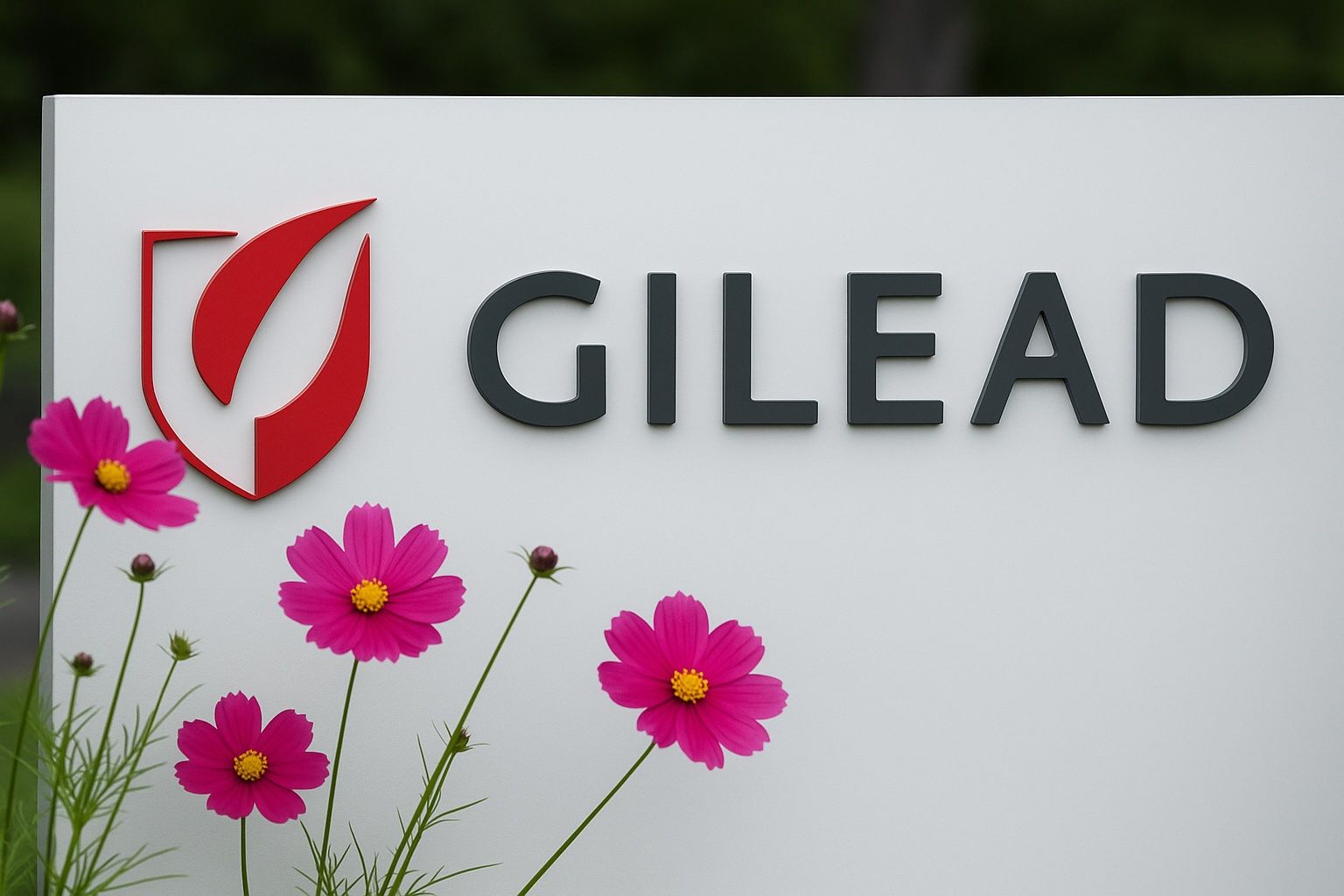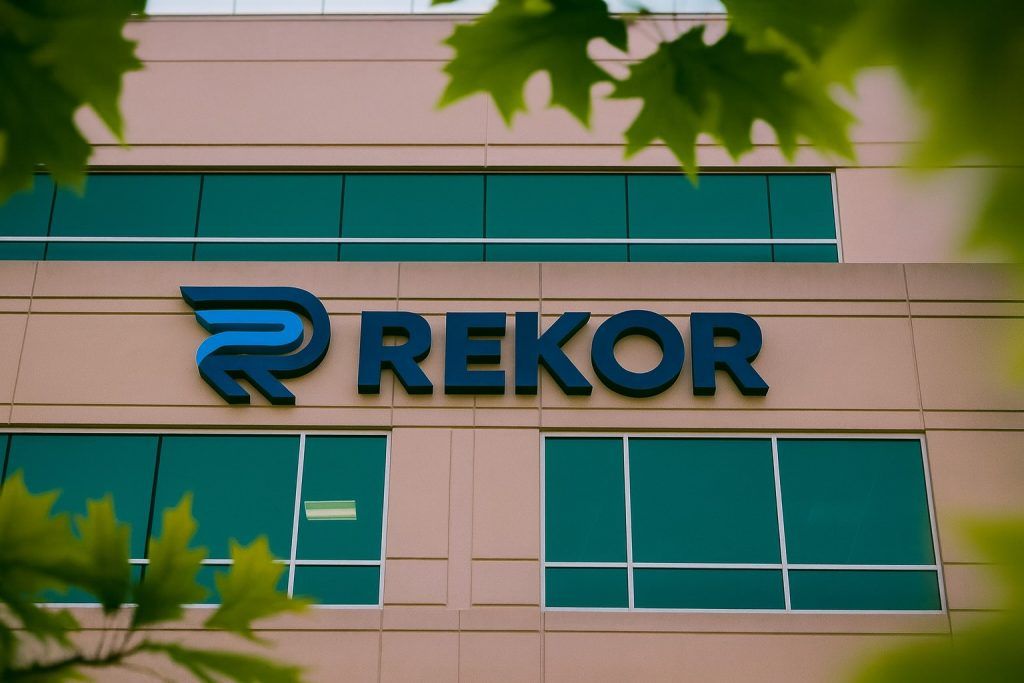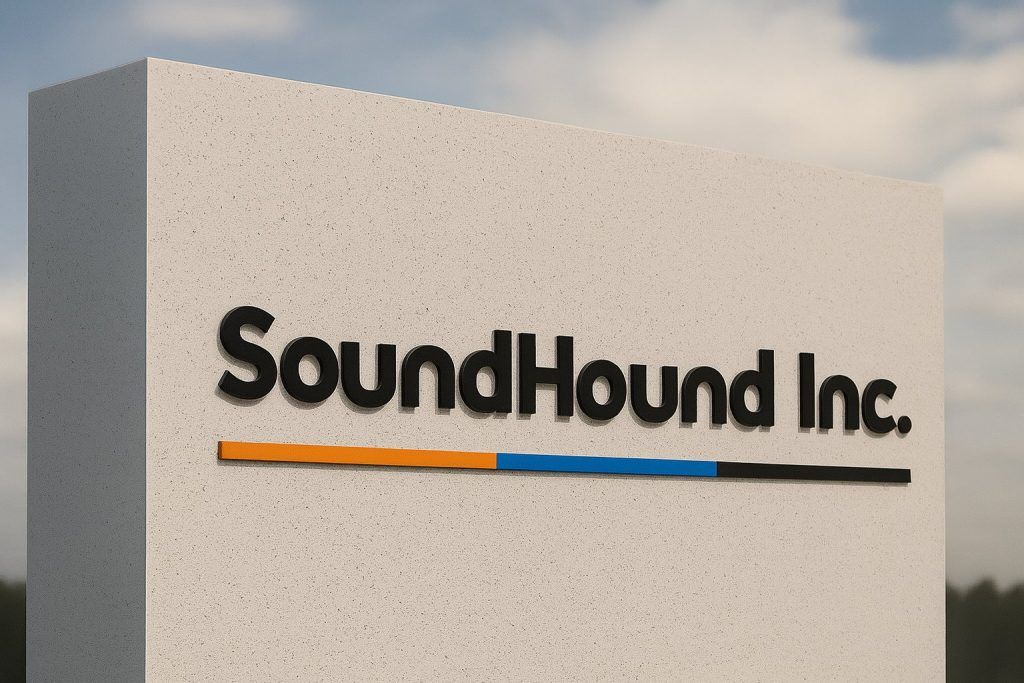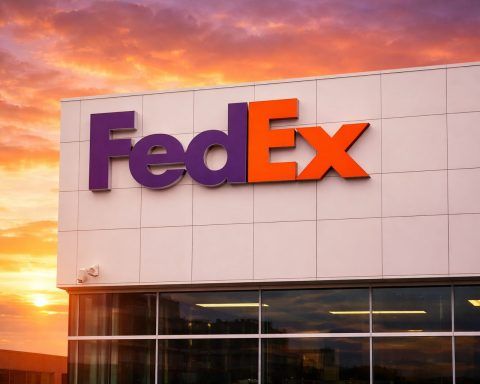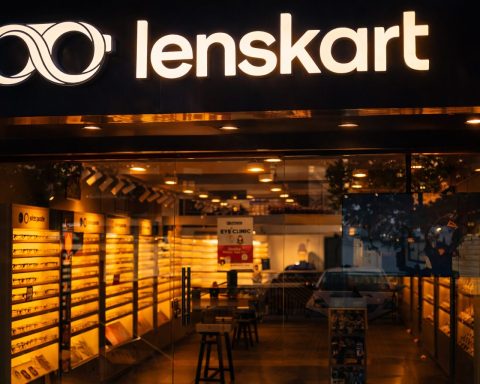- Surging Stock Price: Gilead Sciences’ stock jumped to around $123 per share on October 17, 2025, up roughly 4–5% intraday and nearly 40% higher than a year ago, vastly outperforming the broader biotech sector [1] [2]. Its market capitalization now stands near $150 billion.
- Patent Win Secures HIV Blockbuster: Gilead settled a high-profile patent litigation over its blockbuster HIV drug Biktarvy, delaying any generic competition in the U.S. until April 1, 2036 [3]. Analysts call the settlement a “significant positive,” as it preserves Biktarvy’s >50% market share in HIV therapy for years longer [4].
- New HIV Therapy Boosts Pipeline: The company’s long-acting HIV prevention shot Yeztugo (lenacapavir) – the first twice-yearly PrEP injection approved by the FDA – is seeing strong uptake. Moody’s just raised Gilead’s outlook to “Positive”, citing momentum from Yeztugo’s launch [5], and the CDC recently endorsed the drug’s use for HIV prevention [6].
- Analysts Turn Bullish: Wall Street is increasingly upbeat. Redburn raised its price target to $143 (from $136) on robust physician feedback for Yeztugo [7]. JPMorgan issued a Street-high $145 target in September [8]. Still, the average 12-month target is ~$118, indicating the stock is near consensus fair value after its rally [9]. Some analysts, like RBC, remain cautious given potential U.S. drug pricing pressures on Biktarvy [10].
- Pipeline & Deals Expand Beyond HIV: Gilead showcased new oncology data at ESMO 2025, including late-breaking results for its cancer drug Trodelvy [11], underscoring expansion into cancer therapy. Its Kite Pharma unit just struck a $1.5+ billion cell therapy pact with China’s Pregene ($120M upfront, $1.52B in milestones) to accelerate next-gen CAR-T treatments [12]. This comes as peers like Takeda and Novo Nordisk retreat from cell therapy, highlighting Gilead’s commitment to the field [13]. Gilead also partnered with PEPFAR/State Department to supply lenacapavir to developing countries at no profit, aiming to reach 2 million people [14].
Stock Jumps as Outlook Brightens
Gilead’s share price has been on a tear in recent weeks, reaching new highs for 2025. By mid-day October 17, GILD was up about 4.7% to roughly $123 per share [15]. Year-to-date, the stock has rallied nearly 47%, adding tens of billions to Gilead’s market value [16]. This far outpaces the single-digit gain of the Nasdaq Biotechnology Index over the same period [17] [18]. Investors have cheered a string of positive catalysts: strong earnings, a fortified HIV franchise, and growing pipeline prospects.
Notably, Gilead’s Q2 results in August beat expectations and prompted management to raise full-year guidance, citing robust demand for core therapies. That news sent the stock surging 8.3% in one day [19]. The current climb builds on that momentum, reflecting increasing confidence in Gilead’s growth trajectory heading into year-end.
HIV Franchise: Patent Victory and New Therapies
A major driver of Gilead’s recent optimism is the extended runway for Biktarvy, its top-selling HIV treatment. Earlier this month, Gilead announced settlement agreements with generic manufacturers Lupin, Cipla, and Laurus Labs to resolve patent litigation over Biktarvy [20] [21]. Under the deal, no generic version of Biktarvy can enter the U.S. market before April 1, 2036, years beyond the drug’s previously expected 2033 exclusivity expiry [22]. This effectively locks in Biktarvy’s revenue stream for an extra three years, a boon for Gilead’s HIV portfolio. Analysts at Leerink Partners hailed the settlement as a “significant positive” for Gilead, noting Biktarvy’s sales are still growing and could expand from its already dominant >50% share of the HIV treatment market [23]. Investors clearly agree – the patent win removes a big overhang and has been a catalyst for the stock’s recent rise.
At the same time, Gilead is rolling out new HIV innovations to secure its long-term leadership in the field. In June, the FDA approved lenacapavir (brand name Yeztugo) as the first-and-only twice-yearly injectable PrEP (pre-exposure prophylaxis) for HIV prevention [24]. This long-acting therapy, given just two times a year, addresses a key need for more convenient HIV prevention options. Initial reception appears strong: Moody’s Investors Service cited the Yeztugo launch as a key reason for upgrading Gilead’s credit outlook to Positive (affirming its A3 rating) [25]. Physicians have also responded favorably – Rothschild Redburn analysts noted “strong physician feedback on Yeztugo” when raising their GILD price target [26]. And in a public health boost, the U.S. CDC gave a “resounding endorsement” of Yeztugo for HIV prevention in its guidelines [27], which could further drive uptake.
By shoring up Biktarvy’s exclusivity and bringing novel drugs like Yeztugo to market, Gilead is extending its HIV franchise well into the next decade. The company is also developing additional long-acting treatments – for example, combining lenacapavir with other antiretrovirals in a potential once-weekly oral HIV therapy, with new data presented at this week’s European AIDS Conference. All told, these moves strengthen Gilead’s dominance in HIV and reassure investors that the cornerstone business will remain a cash cow even as older drugs face eventual patent cliffs.
Pipeline and Partnerships Beyond HIV
Beyond virology, Gilead is aggressively expanding into oncology and cell therapy, seeking new growth drivers. This week the company had a prominent presence at the ESMO 2025 oncology congress, underlining its ambitions in cancer treatment. Gilead and its Kite Pharma subsidiary unveiled a slate of new cancer data, including late-breaking Phase 3 results for Trodelvy (Gilead’s antibody-drug conjugate for breast cancer) and analyses of an anti-TIGIT immunotherapy in development [28]. The data presentations – which drew interest for potentially improving first-line treatment of certain cancers – underscore Gilead’s “bold commitment to transform cancer care,” as the company put it in its press release. While Gilead’s oncology portfolio is still in its early stages compared to its HIV business, analysts see significant long-term opportunity if drugs like Trodelvy can expand into new indications.
In addition to organic R&D, Gilead is inking deals to bolster its pipeline. On October 17, Kite (Gilead’s cell therapy arm) announced a global licensing pact with China-based Pregene to co-develop next-generation CAR-T cell therapies [29]. The agreement involves $120 million upfront and up to $1.52 billion in milestone payments to Pregene [30], plus royalties on any approved products. This $1.5+ billion bet aims to accelerate in vivo CAR-T technologies (delivering cell therapy genes directly into patients) – a cutting-edge approach that could overcome some limitations of current CAR-T treatments. A Kite spokesperson said the partnership will integrate complementary technologies to speed up clinical proof-of-concept for in vivo therapies [31].
Gilead’s move comes as some rivals pull back from cell therapy amid high costs and operational challenges. Earlier this month, Takeda announced an exit from in-house cell therapy R&D, and days later Novo Nordisk did the same, each deciding to seek partners for their programs [32]. In contrast, Gilead (and fellow CAR-T leader Bristol Myers Squibb) are doubling down: BMS just made a similar $1.5 billion acquisition of Orbital Therapeutics to boost its cell therapy capabilities [33], and Gilead’s August purchase of Interius BioTherapeutics for $350 million added an in vivo CAR-T platform to Kite’s toolkit [34]. The Pregene deal extends that strategy, leveraging China’s biotech innovation – part of a wider trend, as an estimated $48.5 billion poured into China pharma partnerships in the first half of 2025 alone [35]. For Gilead, investing in these partnerships signals confidence that cell and gene therapies will be a major growth avenue, complementing its strength in HIV.
Meanwhile, Gilead continues to emphasize its public-health partnerships and global reach. The company recently partnered with the U.S. State Department’s PEPFAR program to provide lenacapavir (Yeztugo) to high-HIV-incidence countries, aiming to reach 2 million people over three years [36]. Gilead will supply the drug at no profit under this initiative, which, while not a revenue generator, enhances the company’s leadership image in combating HIV worldwide. Such efforts can bolster Gilead’s relationships with regulators and global health authorities – an intangible asset as it seeks approvals and reimbursement for its innovations around the world.
Wall Street’s Take: Upgrades and Cautions
Analysts have generally grown more bullish on Gilead in light of its recent wins. The stock now carries a consensus rating around a “Buy/Outperform” and a dozen firms have hiked targets over the past quarter. In fact, the three most recent analyst updates (Citigroup, JPMorgan, and RBC in Oct–Sep) averaged a price target of about $126 – implying modest upside – and all three reiterated bullish or neutral stances [37]. JPMorgan in mid-September raised its target to $145 (Overweight), the highest on Wall Street [38], citing Gilead’s strengthening HIV outlook and underappreciated pipeline value. Citigroup followed in early October, upping its target from $125 to $135 while maintaining a Buy rating [39] [40]. And just this week, Redburn (Rothschild) boosted its target to $143 and reiterated a Buy, highlighting the “exceptional” launch trajectory of lenacapavir PrEP and Gilead’s solid execution [41].
These bullish revisions reflect expectations that Gilead’s earnings will accelerate in coming years thanks to the delayed Biktarvy generics and new products like Yeztugo. Some analysts are also factoring in Gilead’s hefty dividend (yield ~2.7%) and share buybacks, which make the stock attractive as a value play in biotech. With GILD now trading in the $120s, hitting many firms’ prior targets, several sell-side analysts have signaled that more upside hinges on continued pipeline success – for example, strong oncology trial results or faster-than-expected uptake of lenacapavir.
It’s worth noting that not everyone on the Street is fully on board the Gilead rally. The current average 12-month price target is about $118–$120 (roughly where the stock traded this week), indicating that by consensus the stock is fairly valued after its recent run-up [42]. A few analysts remain skeptical of Gilead’s growth prospects beyond HIV. RBC Capital, for instance, has a Sector Perform rating and a $98 target (as of its last update in August) [43], essentially saying the stock may be overextended. RBC and others have voiced concern that political and pricing pressures could emerge, especially with the U.S. administration eyeing high-cost drugs. Notably, Biktarvy – which retails around $36,000 per year – fits the profile of expensive medicines recently criticized by policymakers [44]. Any moves to regulate drug pricing or mandate Medicare negotiations could weigh on Gilead’s long-term margins, a risk that cautious analysts keep in mind.
Overall, however, Wall Street’s tone has improved markedly in 2025. A year ago, GILD traded in the $80s amid questions about its pipeline. Today, the narrative is more optimistic: Gilead has secured its HIV cash flows and proven it can bring important new drugs to market, and it’s investing boldly to diversify. As a result, even value-focused investors have warmed up to the stock. Moody’s upgrade of Gilead’s outlook to Positive (rare for a pharma at A3 rating) underscores that the credit market, too, sees lower risk and higher growth ahead [45].
Looking Ahead
Investors won’t have to wait long for the next check-up on Gilead’s performance. The company is scheduled to report its third-quarter earnings on October 30, 2025, after market close [46]. In that report, analysts will be watching for updated revenue guidance now that the Biktarvy settlement is in hand, as well as early sales figures for Yeztugo and any color on its launch rollout. Gilead’s management may also provide pipeline updates – for example, progress timelines for Trodelvy in new cancer settings or plans for lenacapavir in additional prevention/treatment indications.
Another focal point will be Gilead’s capital allocation. The firm has historically been shareholder-friendly (it pays a quarterly dividend and executed buybacks), and with cash flows secure, investors will look for signals of continued dividends, buybacks, or strategic M&A. Given Gilead’s recent deal-making spree (the Kite-Pregene partnership and other biotech investments), any commentary on further acquisitions or partnerships will be noteworthy.
In summary, Gilead Sciences enters late 2025 with significant momentum. Its stock is near multi-year highs, buoyed by a trifecta of positive developments: an extended monopoly on its flagship HIV drug, a successful launch of a one-of-a-kind HIV prevention therapy, and visible progress in diversifying into oncology and advanced therapies. While some risks remain on the horizon – from potential drug price reforms to the execution challenges of R&D – the consensus is that Gilead has substantially improved its outlook. If upcoming earnings and trial results reinforce this trajectory, analysts suggest the stock’s strong run could continue into 2026. For now, GILD has transformed from a defensive, low-growth pharma play into one of the biotech sector’s standout stories of 2025. Investors are paying close attention to see if the company can keep delivering on the promise behind this surge [47] [48].
Sources: Gilead Sciences investor news and filings; FiercePharma [49] [50]; Investing.com [51] [52]; BioSpace [53]; TS2.tech [54]; WallStreetZen [55]; Benzinga/Analyst reports [56] [57]; Nasdaq/StockAnalysis data [58]. All information is up to date as of October 17, 2025.
References
1. www.benzinga.com, 2. stockanalysis.com, 3. www.investing.com, 4. www.fiercepharma.com, 5. www.investing.com, 6. www.fiercepharma.com, 7. www.investing.com, 8. www.benzinga.com, 9. www.benzinga.com, 10. www.investing.com, 11. medicalupdateonline.com, 12. www.biospace.com, 13. www.biospace.com, 14. www.investing.com, 15. www.benzinga.com, 16. stockanalysis.com, 17. stockanalysis.com, 18. www.invesco.com, 19. ts2.tech, 20. www.investing.com, 21. www.investing.com, 22. www.fiercepharma.com, 23. www.fiercepharma.com, 24. www.gilead.com, 25. www.investing.com, 26. www.investing.com, 27. www.fiercepharma.com, 28. medicalupdateonline.com, 29. www.biospace.com, 30. www.biospace.com, 31. www.biospace.com, 32. www.biospace.com, 33. www.biospace.com, 34. www.biospace.com, 35. www.biospace.com, 36. www.investing.com, 37. www.benzinga.com, 38. www.benzinga.com, 39. www.benzinga.com, 40. www.benzinga.com, 41. www.investing.com, 42. www.benzinga.com, 43. www.benzinga.com, 44. www.investing.com, 45. www.investing.com, 46. www.benzinga.com, 47. ts2.tech, 48. www.investing.com, 49. www.fiercepharma.com, 50. www.fiercepharma.com, 51. www.investing.com, 52. www.investing.com, 53. www.biospace.com, 54. ts2.tech, 55. www.wallstreetzen.com, 56. www.benzinga.com, 57. www.benzinga.com, 58. stockanalysis.com
